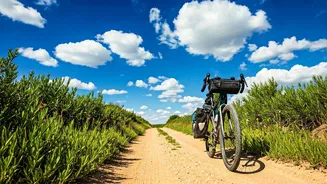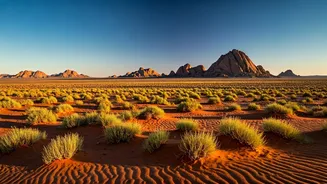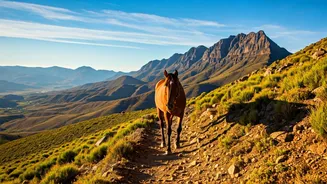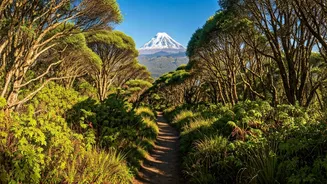Essential Preparation
Before embarking on a cycling adventure through Madagascar's Route Nationale 7, comprehensive preparation is absolutely vital. Start with a thorough examination
of your bicycle to ensure it is in top-notch condition. This includes a detailed inspection of the tires, brakes, gears, and chain, and if possible, carry spares of these important components. Next, evaluate your physical fitness and tailor your training to the rigors of cycling across varying terrains, including both steep ascents and descents. Packing light yet strategically is key. Include essential tools for roadside repairs, such as a tire pump, a repair kit, and a multi-tool. Always prioritize hydration by carrying sufficient water or a water purification system. Plan your route carefully and identify reliable sources of food, water, and accommodation along the way. Be informed about the weather patterns and potential hazards. Lastly, it is crucial to secure travel insurance, considering potential medical emergencies or the need for evacuation. Your preparations determine the overall safety and enjoyment of your trip; therefore, ensure they are completed with attention to detail.
Navigating Challenging Terrains
Cycling through Madagascar's Route Nationale 7 exposes you to a vast array of terrains, from smooth asphalt stretches to rough, gravel-laden roads. The northern part of the route presents more challenging conditions, including sections with potholes, loose surfaces, and steep inclines, making endurance a key factor. In contrast, certain segments near the central highlands may feature hilly profiles that require consistent gear changes and efficient pedaling techniques. Understanding the terrain's variations becomes crucial for efficient and safe travel. Always descend with caution and use your brakes judiciously to maintain control on the downhills. Be alert for changing weather conditions, which can dramatically affect road conditions. During periods of rainfall, some routes may become particularly hazardous. Consider carrying spare inner tubes and appropriate tools in case of tire punctures or mechanical issues. Moreover, make sure you have adequate sun protection and hydration to counteract the effects of exposure. Be aware that certain areas may have limited services, so plan accordingly. Regularly inspect your bicycle and make adjustments to your route based on changing conditions to ensure you can make the most of your journey.
Engaging with Communities
Engaging with the local communities along the Route Nationale 7 will enrich your cycling adventure. Prioritize showing respect for local customs and traditions. Learn some basic phrases in Malagasy to facilitate communication, and show appreciation for the locals’ friendliness. Interactions with local people will also offer opportunities to gain insights into their lives, cultures, and traditions. Always seek guidance from locals regarding the safest routes, local attractions, and hidden gems. Respect their privacy, particularly when taking photographs. Support the local economy by purchasing food, souvenirs, and services from local businesses, which promotes economic sustainability. Consider supporting local initiatives. Building genuine relationships with the people you meet will significantly enhance your cycling experience, fostering mutual respect and understanding. Be open to the unexpected and embrace the warmth and hospitality of the Malagasy people. By immersing yourself in their culture and showing genuine interest, you'll make lasting memories and experience the true spirit of Madagascar.
Diverse Landscape Views
Madagascar's Route Nationale 7 delivers a stunning visual tapestry of natural landscapes. As you cycle, you will witness everything from lush rainforests to rolling savannahs and towering mountain ranges. Each segment of the route provides a distinct visual experience. The journey through the central highlands presents panoramas of terraced rice paddies and dramatic volcanic formations, offering breathtaking views that will leave a lasting impression. Further south, you will traverse through the dry and arid areas and witness the beauty of the country's baobab trees. Make frequent stops to take photographs and capture the essence of the landscape; use these moments to admire the diverse flora and fauna that thrive within these unique ecosystems. Be prepared for varying weather conditions, which may impact the visibility and the overall ambiance of the scenery. If possible, consider cycling during sunrise or sunset, when the lighting casts stunning shadows and colors across the land. Embrace the opportunity to connect with the environment. Remember that you are there to preserve the beauty of this beautiful landscape.










